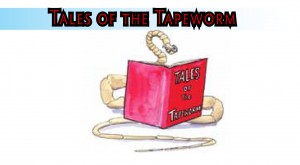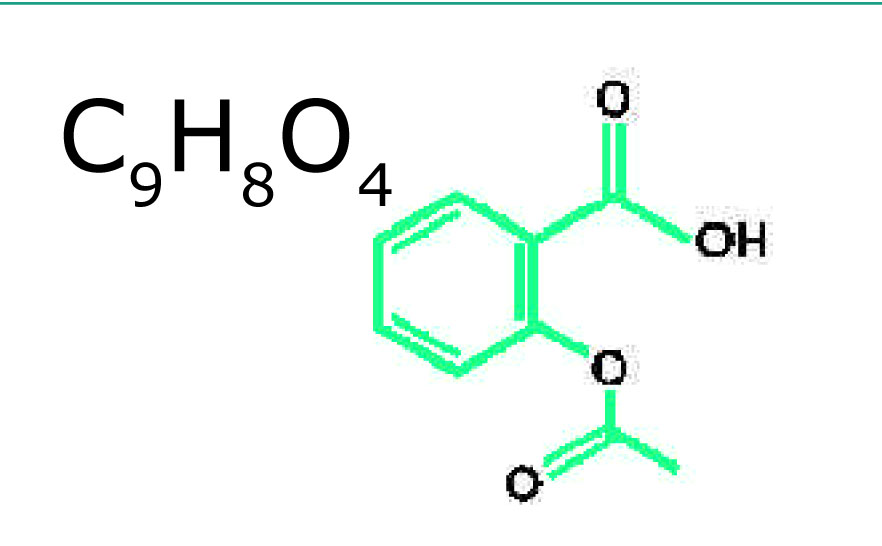November/December 2002 ISSN-1059-6518 Volume 15, Number 6
Psychotropic Medications
Frank Hubbell, DO
This segment of the “Medicine Chest” will follow up on the feature article by reviewing the psychotropic medications and their potential impact on outdoor and athletic activities. This is a very large and complex area of psychopharmacology. There are however, several principles that if understood and followed should minimize the risks associated with the following family of therapeutic drugs and outdoor experiential education.
November/December 2002 ISSN-1059-6518 Volume 15, Number 6
Behavior Meds in the Backcountry
The Potential Link Between Physiological Stressors and Behavioral Issues
By Preston B. Cline
Preface
This article is aimed at those wilderness medicine providers who primarily use their skills in the context of leading groups into the backcountry. The intent of the article is NOT to demonstrate causality between any two factors. Instead, it is an attempt to highlight the lack of research concerning the relationship between physiological stressors and behavioral incidents while out on course. In preparing for this article it has become clearly apparent that the issue of taking medicated clients with behavior issues into the backcountry is significantly more complicated then most programs seem to realize.
https://www.wildernessmedicinenewsletter.com/wp-content/uploads/2014/10/wmnlogo20151.png00WMN Editorshttps://www.wildernessmedicinenewsletter.com/wp-content/uploads/2014/10/wmnlogo20151.pngWMN Editors2002-11-17 17:49:592011-12-06 18:26:47Behavior Meds in the Backcountry
September/October 2002 ISSN-1059-6518 Volume 15, Number 5
Tales of the Tapeworm
By Dr. E.C. Oli
WEST NILE VIRUS
Flaviviridea
In the world of infectious disease West Nile Virus (WNV) is not a statistically important disease. Its impact is actually minimal in that it does not cause harm to millions or even thousands of people. It is one of about 534 zoonotic viruses of which 120 are know to cause illness in humans. But it is important, because it is a new acute illness that is potentially lethal, highly preventable, and we do not yet know its full potential to spread and cause harm.
September/October 2002 ISSN-1059-6518 Volume 15, Number 5
Disclaimer: The content of the Wilderness Medicine Newsletter is not a substitute for formal training or the recommendation of an expert. The authors, editors, and artists are not responsible for inaccuracies.
Cardiac Risk, Assessment, and Management in the Backcountry
By Brad Boehringer, (W)EMT-B
Every 33 seconds, nearly a million times a year, someone will die as a result of cardiovascular disease (CVD). Cardiovascular disease is the leading cause of death in the United States among men and women of every race. In 1999 it accounted for 1/3 of deaths globally. If you spend time in the wilderness, it’s not far fetched to predict that you may encounter someone having a cardiac event.
As our understanding of CVD has increased, it has become clear that it is well within our capabilities to reduce our risk of suffering from this increasingly common problem. Unfortunately, as care providers it is all too common that we see and deal with CVD in a reactionary instead of prophylactic way. Our role in prevention diminishes. On this premise we must become attuned to recognizing the signs of a possible cardiac event and know what we can do as basic life support providers to help.
https://www.wildernessmedicinenewsletter.com/wp-content/uploads/2014/10/wmnlogo20151.png00WMN Editorshttps://www.wildernessmedicinenewsletter.com/wp-content/uploads/2014/10/wmnlogo20151.pngWMN Editors2002-09-17 13:58:282011-12-06 20:46:20Problems with the Pump
September/October 2002 ISSN-1059-6518 Volume 15, Number 5
The Medicine Chest
ASPIRIN- Acetylsalicylic Acid
by R.X. Daley, PharmD
History: The earliest know uses of salicin, the naturally occurring form of aspirin found in willow bark, dates back to the 5th century B.C. Greek physician Hippocrates, who used it for pain relief.
Salicin was modified to sodium salicylate and was used in the early 1800’s as a pain reliever. However, this form of aspirin was very hard on the stomach. In 1897 a German chemist named Felix Hoffman, in order to help his arthritic father, altered sodium salicylate to acetylsalicylic acid in an effort to make a form of aspirin that was easier on the stomach.
Schistosomiasis is an infectious disease that you can get from swimming in contaminated water. The parasite is unique in that it does not have to be ingested, instead is can burrow directly through your skin, breaching our primary line of defense.
The natural life cycle of this organism is from ducks, to snails, to ducks. The organism lives in the duck’s gut; it is spread with the duck feces into water. In the water it is in a free swimming form called a cercarium. This form penetrates the snail and takes up residency. It then gets back from the snail to the duck when the duck eats the snail. So, the duck poops in the water, the cercaria swims around until it finds a snail, it then burrows into the snail, and then the duck eats the snail.
PSYCHOTROPIC MEDICATIONS
/in Medications, Psychotropic Medications/by WMN EditorsNovember/December 2002 ISSN-1059-6518 Volume 15, Number 6
Psychotropic Medications
Frank Hubbell, DO
This segment of the “Medicine Chest” will follow up on the feature article by reviewing the psychotropic medications and their potential impact on outdoor and athletic activities. This is a very large and complex area of psychopharmacology. There are however, several principles that if understood and followed should minimize the risks associated with the following family of therapeutic drugs and outdoor experiential education.
Read more
Behavior Meds in the Backcountry
/in Medications/by WMN EditorsNovember/December 2002 ISSN-1059-6518 Volume 15, Number 6
Behavior Meds in the Backcountry
The Potential Link Between Physiological Stressors and Behavioral Issues
By Preston B. Cline
Preface
This article is aimed at those wilderness medicine providers who primarily use their skills in the context of leading groups into the backcountry. The intent of the article is NOT to demonstrate causality between any two factors. Instead, it is an attempt to highlight the lack of research concerning the relationship between physiological stressors and behavioral incidents while out on course. In preparing for this article it has become clearly apparent that the issue of taking medicated clients with behavior issues into the backcountry is significantly more complicated then most programs seem to realize.
Read more
WEST NILE VIRUS
/in Disease, West Nile Virus/by WMN EditorsSeptember/October 2002 ISSN-1059-6518 Volume 15, Number 5
Tales of the Tapeworm
By Dr. E.C. Oli
WEST NILE VIRUS
Flaviviridea
Read more
Problems with the Pump
/in cardiac/by WMN EditorsSeptember/October 2002 ISSN-1059-6518 Volume 15, Number 5
Disclaimer: The content of the Wilderness Medicine Newsletter is not a substitute for formal training or the recommendation of an expert. The authors, editors, and artists are not responsible for inaccuracies.
Cardiac Risk, Assessment, and Management in the Backcountry
By Brad Boehringer, (W)EMT-B
Every 33 seconds, nearly a million times a year, someone will die as a result of cardiovascular disease (CVD). Cardiovascular disease is the leading cause of death in the United States among men and women of every race. In 1999 it accounted for 1/3 of deaths globally. If you spend time in the wilderness, it’s not far fetched to predict that you may encounter someone having a cardiac event.
As our understanding of CVD has increased, it has become clear that it is well within our capabilities to reduce our risk of suffering from this increasingly common problem. Unfortunately, as care providers it is all too common that we see and deal with CVD in a reactionary instead of prophylactic way. Our role in prevention diminishes. On this premise we must become attuned to recognizing the signs of a possible cardiac event and know what we can do as basic life support providers to help.
Read more
ASPIRIN – Acetylsalicylic Acid
/in Medications/by WMN EditorsSeptember/October 2002 ISSN-1059-6518 Volume 15, Number 5
The Medicine Chest
ASPIRIN- Acetylsalicylic Acid
by R.X. Daley, PharmD
History: The earliest know uses of salicin, the naturally occurring form of aspirin found in willow bark, dates back to the 5th century B.C. Greek physician Hippocrates, who used it for pain relief.
Salicin was modified to sodium salicylate and was used in the early 1800’s as a pain reliever. However, this form of aspirin was very hard on the stomach. In 1897 a German chemist named Felix Hoffman, in order to help his arthritic father, altered sodium salicylate to acetylsalicylic acid in an effort to make a form of aspirin that was easier on the stomach.
chemist named Felix Hoffman, in order to help his arthritic father, altered sodium salicylate to acetylsalicylic acid in an effort to make a form of aspirin that was easier on the stomach.
Read more
SCHISTOSOMIASIS
/in Disease, Environemtal Injuries, Infection, Schistosomiasis/by WMN EditorsTales of the Tapeworm
By Dr. E.C. Oli
July/August 2002 ISSN-1059-6518 Volume 15, Number 4
Schistosomiasis
Schistosoma japonicum, Schistosoma mansoni, Schistosoma haematobium
Schistosomiasis is an infectious disease that you can get from swimming in contaminated water. The parasite is unique in that it does not have to be ingested, instead is can burrow directly through your skin, breaching our primary line of defense.
The natural life cycle of this organism is from ducks, to snails, to ducks. The organism lives in the duck’s gut; it is spread with the duck feces into water. In the water it is in a free swimming form called a cercarium. This form penetrates the snail and takes up residency. It then gets back from the snail to the duck when the duck eats the snail. So, the duck poops in the water, the cercaria swims around until it finds a snail, it then burrows into the snail, and then the duck eats the snail.
Read more